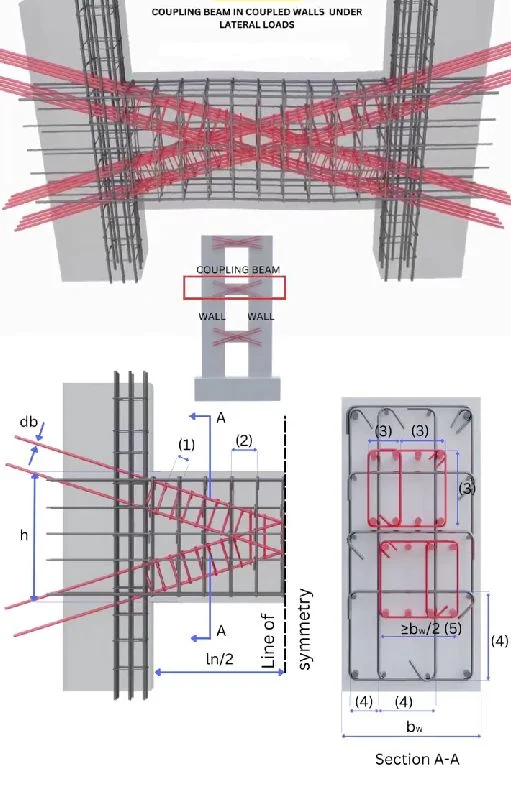Understanding the Role of Coupling Beams in Structural Stability
Coupling beams, often overlooked but vital components in structural engineering, play a critical role in ensuring rigidity and resilience, particularly in earthquake-prone regions. Let's delve into their significance and the key standards governing their design.
🔹 What are Coupling Beams?
Coupling beams, also known as lintels, serve as connecting elements between two vertical walls. These beams are instrumental in enhancing the overall stability of structures and dissipating seismic energy effectively.
🔹 The Functionality of Lintels:
In structures with openings, lintels act as horizontal partitions, linking the vertical sections of walls. This connection allows for a collaborative effort among the walls, bolstering their resistance to seismic forces by increasing inertia and redistributing seismic moments, a portion of the seismic moment is transformed into shear force in the lintel.
🔹 Design Considerations:
Standards such as RPS 2011 in Morocco and the American Concrete Institute ACI 318-14 provide guidelines for the design and construction of coupling beams. From minimum reinforcement requirements to the spacing and orientation of diagonal bars, these standards ensure the structural integrity and safety of buildings.
🔹 Innovations in Reinforcement:
Research, including studies by Paulay and Binney (1974) and Barney et al. (1980), underscores the importance of confined diagonal reinforcement in deep coupling beams. Proper placement and orientation of reinforcement bars are crucial for optimal performance under seismic loading conditions.
🔹 Looking Ahead:
As we continue to advance in structural engineering, it's imperative to adhere to rigorous standards and embrace innovative techniques to enhance the resilience of our built environment against seismic events.
#StructuralEngineering #SeismicDesign #InnovationInConstruction #BuildingSafety








![FREE Irrigation autocad blocks download [DWG] | MEP Tools](https://blogger.googleusercontent.com/img/b/R29vZ2xl/AVvXsEiV-RdjuRHRfloSECetjct_jqOzVmfLzlsj4cD1PO1I24x5bgvkHljsqtbzRMVt3ZEEp_3obsS2JfAtW9s3PpKRFdM84uFpb9giOFjFnB0Swn1it4Un9HJrzme5f1KH2Kczfe7KHb-nU01Iob8kFKT8xLo3qyPsiPl8exQBh7BnqPRZksvoXsb_tVJj85Y/w72-h72-p-k-no-nu/FREE%20Irrigation%20autocad%20blocks%20download.jpg)



0 Comments